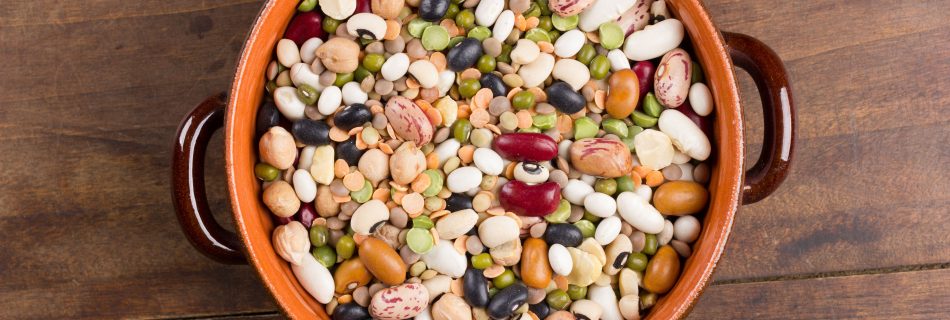Seasonal and local guide: pulses

Or is it legumes? Whatever you prefer to call them, dried beans, peas and lentils, make wonderful additions to our diet. Over the years they’ve gotten a bad rap for giving you gas, or have been cast of as food for hippies and peasants, but now they are seeing a revival.
The beauty of beans and pulses is that they keep for a long time. If you store dried pulses in airtight containers, in a cool, dark place, they’ll keep for years. Remember to keep them somewhere visible though, so you don’t forget about them. Once cooked, you can cover and keep refrigerated for 5 days, or freeze for up to 6 months in Tupperware. To minimise flatulence, increase consumption of beans slowly if they are new to your diet.
 You can source fava beans, quinoa, haricot beans, yellow peas, black badger carlin peas, gog magog beans and whole blue peas from British farms through Hodmedod’s. Hodmedod’s grew out of conversations with Transition Norwich around why we don’t eat more British-grown beans.
You can source fava beans, quinoa, haricot beans, yellow peas, black badger carlin peas, gog magog beans and whole blue peas from British farms through Hodmedod’s. Hodmedod’s grew out of conversations with Transition Norwich around why we don’t eat more British-grown beans.
Increasing the amount of vegetable protein in our diet and reducing meat consumption is important for more a resilient UK in the face of climate change and the declining use of fossil fuels. So why don’t we eat more British-grown beans? They are definitely tasty. They are also nothing new – fava beans were introduced to Britain during the Bronze Age, farmed alongside wheat, barley, oats and peas.
Pulses’ past
The reason why pulses aren’t popular is that as Britain industrialised wealth grew and agriculture shifted towards meat and dairy production. Meat and dairy processing industries sprang up to prepare, pack, can and bottle these foods, making them available to more people more of the time. We built relationships with the local milkman, butcher and greengrocer – there wasn’t a Hodmedod equivalent to get pulses to an increasingly urban market. With ice to store fish and railways to transport them, fish too became a regular fixture of the British diet. By the end of the 20th Century fish and chip shops developed. Beans slipped from the mainstream and became stigmatised as food for the poor. Today pulses grown in the UK are mainly used in livestock feed for meat and dairy animals, fish food, the food industry and for export.
Legumes are beneficial break crops and nitrogen fixers so attractive for farmers. But as national demand has declined farmers have used them instead as a protein rich animal feed or exported them. “The British later embraced pulses from further afield – lentils, chickpeas, American Phaseolus beans – that didn’t carry the historic sigma of our own traditional beans. Most bizarrely we adopted canned Baked Beans as our own national dish, a food made born of war-time rationing and made entirely with imported beans”- bepa.
